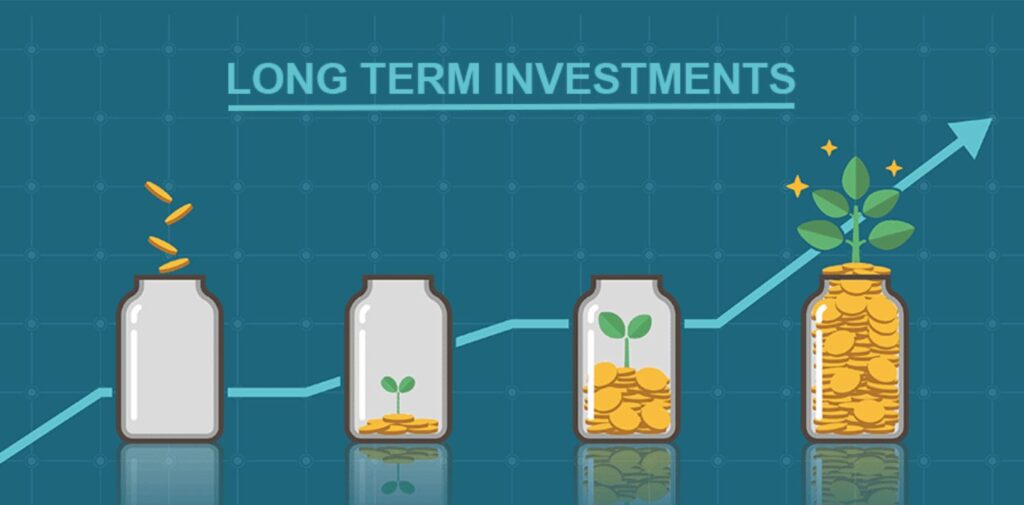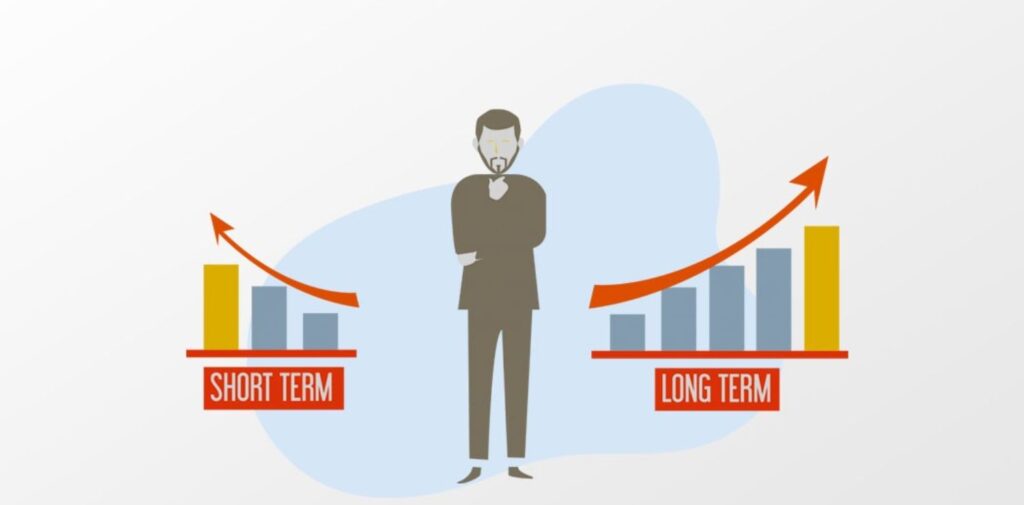When it comes to investing, there are two primary strategies to consider: Long-Term vs. Short-Term Investments. Both approaches have their advantages and risks, and the choice between the two depends on your financial goals, risk tolerance, and time horizon. Understanding the key differences can help you make informed decisions and build a portfolio that aligns with your objectives.
What is Long-Term Investing?
Long-term investing involves holding assets—such as stocks, bonds, or real estate—over a period of several years or even decades. The goal is to benefit from the power of compounding, capital appreciation, and the ability to ride out market volatility.
Advantages of Long-Term Investing
- Compounding Growth: One of the biggest advantages of long-term investing is the ability to benefit from compounding. As your investments generate returns, those returns are reinvested, creating a snowball effect that can significantly increase your wealth over time.
- Lower Taxes: In many countries, long-term investments are taxed at a lower rate than short-term investments. For instance, in India, long-term capital gains from equity investments (held for more than one year) are taxed at 10%, while short-term gains are taxed at 15%.
- Reduced Impact of Market Volatility: Long-term investors are less concerned with short-term market fluctuations. Over time, markets tend to rise, and long-term investors have the patience to wait out downturns and reap the rewards of overall growth.
- Less Time-Consuming: Long-term investors typically do not need to monitor their investments daily. Instead, they make informed decisions based on research and let time do the heavy lifting.

Risks of Long-Term Investing
- Market Risk: Even though long-term investments can ride out short-term volatility, there is always a risk that a specific asset class or individual investment will underperform over the long haul.
- Illiquidity: Some long-term investments, such as real estate or certain retirement accounts, are not easily accessible if you need cash in the short term. This can be a drawback if an emergency arises and you need liquidity.
What is Short-Term Investing?
Short-term investing involves holding assets for a shorter period, typically less than one year, to capitalize on quick gains. This approach is often used for goals like saving for a down payment on a house, a vacation, or an emergency fund.
Advantages of Short-Term Investing
- Quick Returns: Short-term investments can generate quick profits, particularly during periods of market growth. Investors who actively trade or invest in high-volatility assets can potentially see returns faster than long-term investors.
- Liquidity: Many short-term investments, such as stocks, bonds, or money market funds, are highly liquid, meaning you can quickly convert them into cash. This makes short-term investing a good option for those who need access to their money in the near future.
- Flexibility: Short-term investors can quickly change strategies based on market conditions. For example, if a stock is underperforming, a short-term investor can sell it and reinvest in a more promising opportunity.

Risks of Short-Term Investing
- Higher Taxes: Short-term investments are often taxed at a higher rate than long-term investments. For instance, short-term capital gains are taxed at 15% in India, compared to 10% for long-term gains on equity investments.
- Market Volatility: Short-term investors are more vulnerable to market fluctuations. A sudden downturn can lead to significant losses, especially if you need to sell your investments to access cash quickly.
- Requires Active Management: Short-term investing often requires constant monitoring and quick decision-making. It can be time-consuming and stressful, especially for those who are not experienced in market analysis.
How to Decide Which Strategy is Right for You
- Consider Your Financial Goals: Your financial goals should dictate your investment strategy. If you’re saving for retirement, your children’s education, or buying a home in 10-20 years, long-term investing is likely the best approach. On the other hand, if you’re saving for a vacation, a short-term investment might make more sense.
- Evaluate Your Risk Tolerance: Long-term investments tend to be less volatile because they are not as affected by short-term market fluctuations. However, if you’re uncomfortable with the idea of your investments losing value in the short term, you may prefer the security of short-term investing. On the flip side, those who are willing to accept more risk for the potential of higher returns may opt for a long-term strategy.
- Time Horizon: Time horizon plays a significant role in choosing between short-term and long-term investments. If you have 10 years or more before you need the money, long-term investments can provide the best growth potential. If your time horizon is shorter, consider lower-risk, more liquid investments to avoid the need to sell during a downturn.
- Diversification: A balanced approach may be the best strategy for many investors. By diversifying your portfolio across both short-term and long-term investments, you can benefit from the security and liquidity of short-term assets while also taking advantage of the growth potential of long-term investments.

Conclusion: Long-Term vs. Short-Term Investments
Both long-term and short-term investments offer distinct benefits and risks. The right strategy depends on your financial goals, risk tolerance, and time horizon. Long-term investing allows you to benefit from compounding growth and reduced taxes, while short-term investing offers liquidity and flexibility. By understanding the strengths and weaknesses of each approach, you can make informed decisions that will help you achieve your financial objectives.




